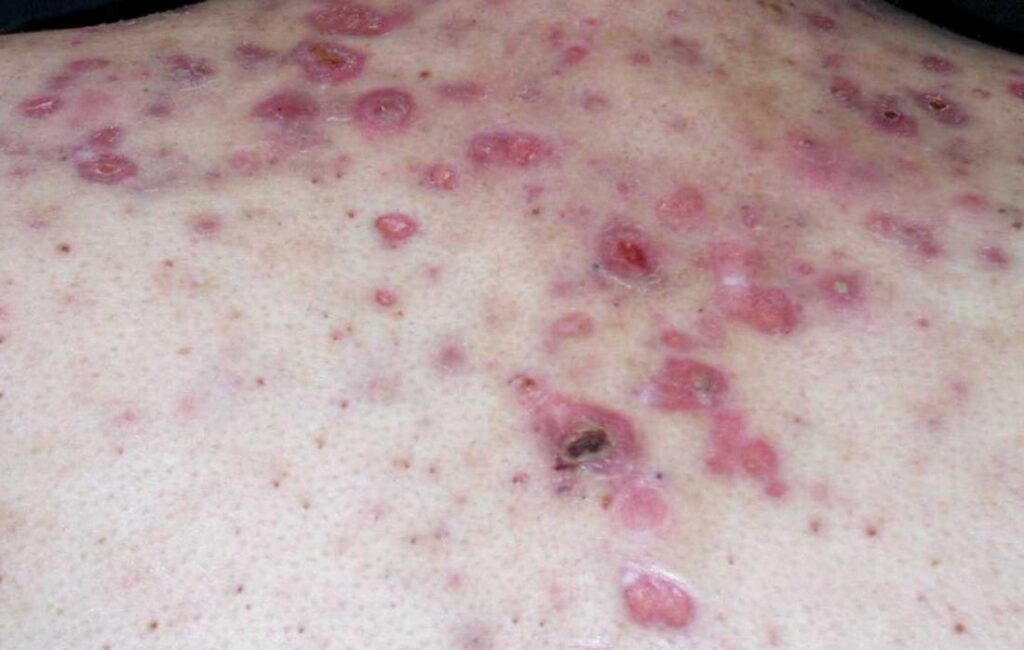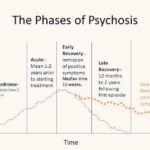Severe recalcitrant nodular acne is the most advanced and persistent form of acne vulgaris, characterized by deep, inflamed, and painful nodules that are resistant to conventional therapies. These lesions often extend into the dermis, causing tissue damage, scarring, and substantial psychological distress. Management of this condition necessitates a strategic, evidence-based approach involving systemic therapies and long-term dermatologic care.

Clinical Presentation and Key Features
Nodular and Cystic Lesions
- Nodules: Firm, inflamed lumps larger than 5 mm in diameter, typically painful to touch.
- Cysts: Pus-filled, softer lesions formed by blocked follicles and immune response.
Common Characteristics
- Distribution: Primarily affects the face, chest, back, and shoulders.
- Chronicity: Persistent over months or years despite standard treatments.
- Scarring: High risk of hypertrophic or atrophic scars post-resolution.
- Psychosocial Impact: Often leads to anxiety, depression, and reduced quality of life.
Causes and Contributing Factors
Hormonal Imbalance
- Elevated androgen levels stimulate sebaceous gland activity and follicular hyperkeratinization.
- Conditions such as polycystic ovary syndrome (PCOS) are commonly associated.
Genetic Predisposition
- Family history significantly increases the likelihood of severe, treatment-resistant acne.
Bacterial Proliferation
- Overgrowth of Cutibacterium acnes (formerly Propionibacterium acnes) triggers inflammation.
Sebum Overproduction
- Excess sebum creates a conducive environment for bacterial colonization and pore blockage.
Lifestyle and Environmental Triggers
- High glycemic diets, stress, comedogenic products, and exposure to pollutants exacerbate symptoms.
Diagnostic Approach to Recalcitrant Nodular Acne
Accurate diagnosis involves clinical evaluation and consideration of potential underlying causes:
Clinical Examination
- Grading severity based on lesion type, count, and distribution.
- Identification of signs of hormonal dysregulation (hirsutism, irregular cycles).
Laboratory Investigations
- Hormonal Panel: Free testosterone, DHEAS, LH/FSH ratio in suspected PCOS cases.
- Thyroid Function Tests: Rule out hormonal contributors.
- Culture and Sensitivity: In cases of secondary bacterial infection.
Standard and Advanced Treatment Modalities
First-Line Systemic Therapy: Isotretinoin
Isotretinoin remains the gold standard for severe recalcitrant nodular acne due to its ability to target all four pathogenic factors:
- Reduces sebum production by 90%
- Normalizes keratinization
- Inhibits C. acnes
- Exerts anti-inflammatory effects
Dosage and Duration
- Typical cumulative dose: 120–150 mg/kg over 4–6 months
- Requires regular liver function tests and lipid panels
Special Considerations
- Teratogenicity: Mandatory use of two forms of contraception for females of childbearing age
- Side Effects: Dryness, arthralgia, mood changes, elevated triglycerides
Hormonal Therapy for Females
- Combined Oral Contraceptives (COCs): Containing estrogen and anti-androgenic progestin
- Spironolactone: Androgen receptor antagonist effective in reducing lesion count
Adjunctive Antibiotic Therapy
- Short-term use of oral doxycycline or minocycline to control initial inflammation
- Not recommended for long-term monotherapy due to resistance
Topical Therapies (Supportive Role)
- Adapalene or Tretinoin: Normalize desquamation
- Benzoyl Peroxide: Reduces bacterial load and resistance
- Clindamycin: Inflammatory lesion control (always in combination)
Advanced Treatment Strategies for Resistant Cases
Laser and Light-Based Therapies
- Fractional CO₂ laser: Resurfaces scarred tissue
- Pulsed-dye laser (PDL): Reduces inflammation and erythema
Intralesional Corticosteroid Injections
- Rapid reduction in inflammation for large nodular lesions
- Triamcinolone acetonide is commonly used
Chemical Peels and Microdermabrasion
- Salicylic acid or glycolic acid peels enhance exfoliation and improve skin texture
Emerging Therapies
- Biologics: Targeted cytokine inhibitors (e.g., IL-17) under investigation
- Topical Clascoterone: Novel androgen receptor blocker showing promising results
Long-Term Management and Recurrence Prevention
Maintenance Regimens
- Topical retinoids post-isotretinoin therapy to maintain remission
- Continued use of non-comedogenic skincare products
Diet and Lifestyle Modifications
- Low glycemic index diet linked with reduced acne severity
- Avoidance of dairy and processed foods
- Stress management through mindfulness and physical activity
Patient Education and Support
- Clear communication regarding realistic expectations and timeline
- Support groups and dermatological counseling to address mental health impacts
FAQs
What makes nodular acne recalcitrant?
Recalcitrant acne fails to respond to multiple conventional therapies due to deeper inflammation, hormonal drivers, or genetic predisposition.
How long does isotretinoin take to work?
Initial improvement is seen in 4–6 weeks, with full remission typically achieved over a 4–6 month course.
Can diet alone treat severe acne?
While diet can influence severity, severe nodular acne typically requires pharmacologic intervention for effective resolution.
Is scarring inevitable with nodular acne?
Without timely and appropriate treatment, the risk of scarring is high. Early isotretinoin initiation helps prevent permanent damage.
Are hormonal therapies safe for long-term use?
With medical supervision, hormonal treatments like COCs and spironolactone are generally safe and effective for long-term use in suitable candidates.

